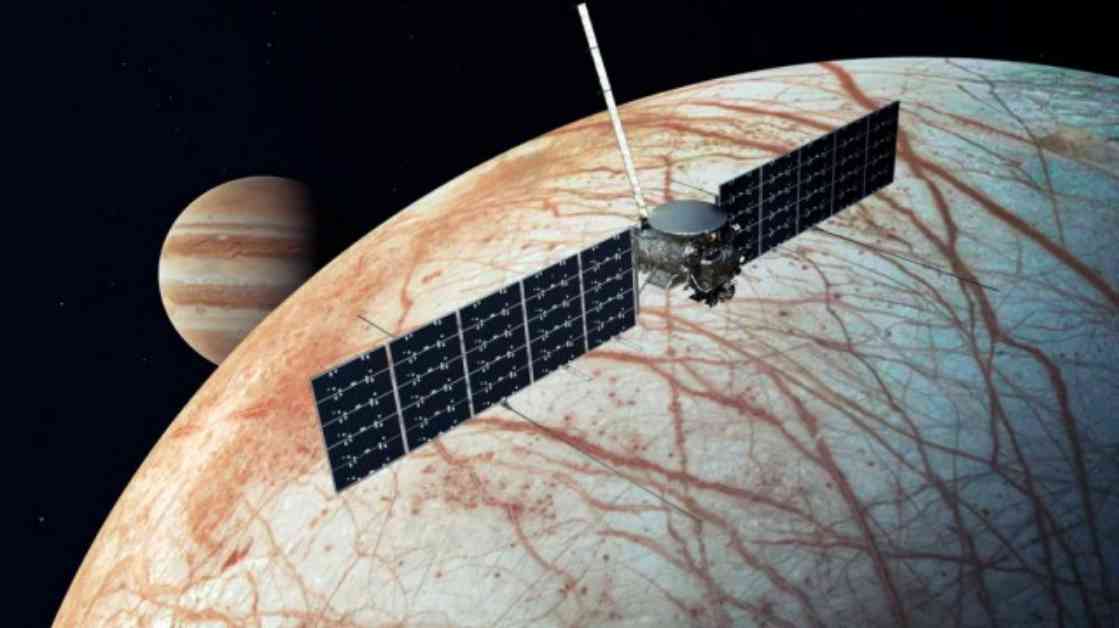NASA recently launched the Europa Clipper spacecraft to explore Jupiter and its moon Europa. The main goal is to investigate beneath Europa’s icy crust to determine if conditions could support life. While the spacecraft won’t search for life directly, it aims to provide valuable insights into the potential habitability of the moon.
Europa is a fascinating moon of Jupiter that scientists believe has an ocean beneath its frozen surface. The Hubble Space Telescope has even spotted geysers erupting from Europa, indicating potential activity below the ice. The mission is particularly exciting because it focuses on a world that may currently be habitable, unlike other missions that look at past habitability.
The Europa Clipper is an impressive spacecraft, with massive solar panels that make it the largest craft built by NASA to explore another planet. It will take over 5 years to reach Jupiter and will fly closer to Europa’s surface than any other spacecraft, providing detailed observations of the moon.
The spacecraft is equipped with nine science instruments, including radar to penetrate the ice, cameras for mapping the moon, and tools to analyze Europa’s surface and atmosphere. This comprehensive set of instruments will help scientists gather valuable data about the moon’s composition and potential for hosting life.
One of the main challenges of the mission is the high radiation levels around Jupiter, posing a risk to the spacecraft’s electronics. To protect the sensitive instruments, the spacecraft’s electronics are housed in a vault with dense walls made of aluminum and zinc. Despite these challenges, engineers have determined that the mission can proceed as planned.
In addition to Europa, other moons in the solar system, such as Ganymede and Callisto, are also thought to have underground oceans. Scientists believe that these ocean worlds could potentially support life, making them exciting targets for future exploration.
The Europa Clipper mission represents a significant step in our understanding of the potential for life beyond Earth. By exploring the icy moons of Jupiter, scientists hope to uncover valuable insights into the habitability of other worlds in our solar system and beyond. As the spacecraft embarks on its journey to Jupiter, the world eagerly awaits the groundbreaking discoveries it will make.


